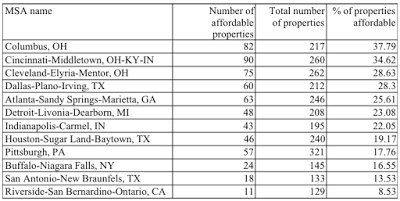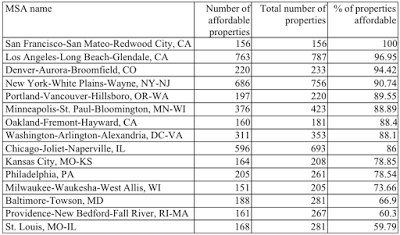The Streetsblog article talks about a new study done by the University of Texas and the University of Utah that evaluated transportation costs for more than 18,000 households receiving HUD rental subsidies. The results show that nearly half have to spend more than 15 percent of the household budget on transportation. HUD’s criteria for “affordable housing” is that it consumes less than 30 percent of a family’s income. However, that doesn’t consider transportation costs.
The study looked at the areas with the highest share of rental assistance properties with high transportation costs, shown in the table below (click to view in a larger size).
Conversely, here are the cities with the highest share of properties with affordable transportation costs:


